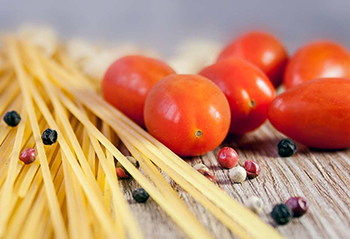
Dr Louise van den Berg from the Department of
Nutrition and Dietetics says the University of the Free State
is taking steps to teach students how to budget and make
them aware how important food nutrition is.
Photo: Pixabay
Research at the University of the Free State (UFS) has indicated that nearly 60% of students are victims of food insecurity and suffer from hunger most of the time. The research by the UFS Faculty of Health Sciences shows that a further 25% are food insecure but are not hungry most of the time.
Senior Lecturer in the Department of Nutrition and Dietetics, Dr Louise van den Berg, says food insecurity is common among student populations across the world. However, local research shows that it is almost double that of tertiary institutions in developed countries.
Food insecurity among students caught many people off-guard
Dr Van den Berg says in South Africa nobody had really looked at the problem until recently “It seems student food insecurity has caught many people off-guard.” She says people tend to think of tertiary students as a privileged group.
The research has now indicated how deep the problem really is on campus. The students that most likely go hungry are single, male, black or coloured, and are generally first-generation students.
They are also mostly undergraduates, those paying their studies from non-bank loans or bursary means, those not living with their parents or guardians or those that need to support somebody else financially.
The results further indicate that those that are likely to suffer from hunger seldom or never have enough money for food but have to borrow money for food, have to ask for food, sell items to get food or steal food.
“A healthy student is a
successful student.”
Bursary money send back home for parents to survive
Dr Van den Berg agrees that one of the main reasons for the situation is economic stress. Research has shown students rarely spend money on food when resources are scarce. Furthermore, parents of students studying with bursaries are not always able to fully support them on campus. Some students send bursary money back home for their parents to survive.
She says other factors that contribute to campus food insecurity are that all over the world universities have terminated catered food halls due to high costs. “To a large extent this has created a food desert for students and now they need to look after themselves.”
To throw money at the problem does not seem to be the answer.
Students are food-uncertain beings
The research indicates that young people on campus do not know where to buy food, much less the correct, nutritional food they need. Dr Van den Berg says most universities are now aware of the problem and have been taking steps. This includes teaching students how to budget and making them aware how important nutrition is for their success and their responsibility for themselves.
Universities are also looking at private funding for food aid and food schemes. Dr Van den Berg says other solutions are the restructuring of bursary fees, student self-help initiatives and food gardens.
The Faculty of Health Sciences is taking the initiative to manage a food blog on the UFS website. It will also use other social media platforms to post food-preparation videos and recipes for students.
Dr Van den Berg says it is important to grow the 15.6% group of students who indicated they are food secure because a healthy student is a successful student.